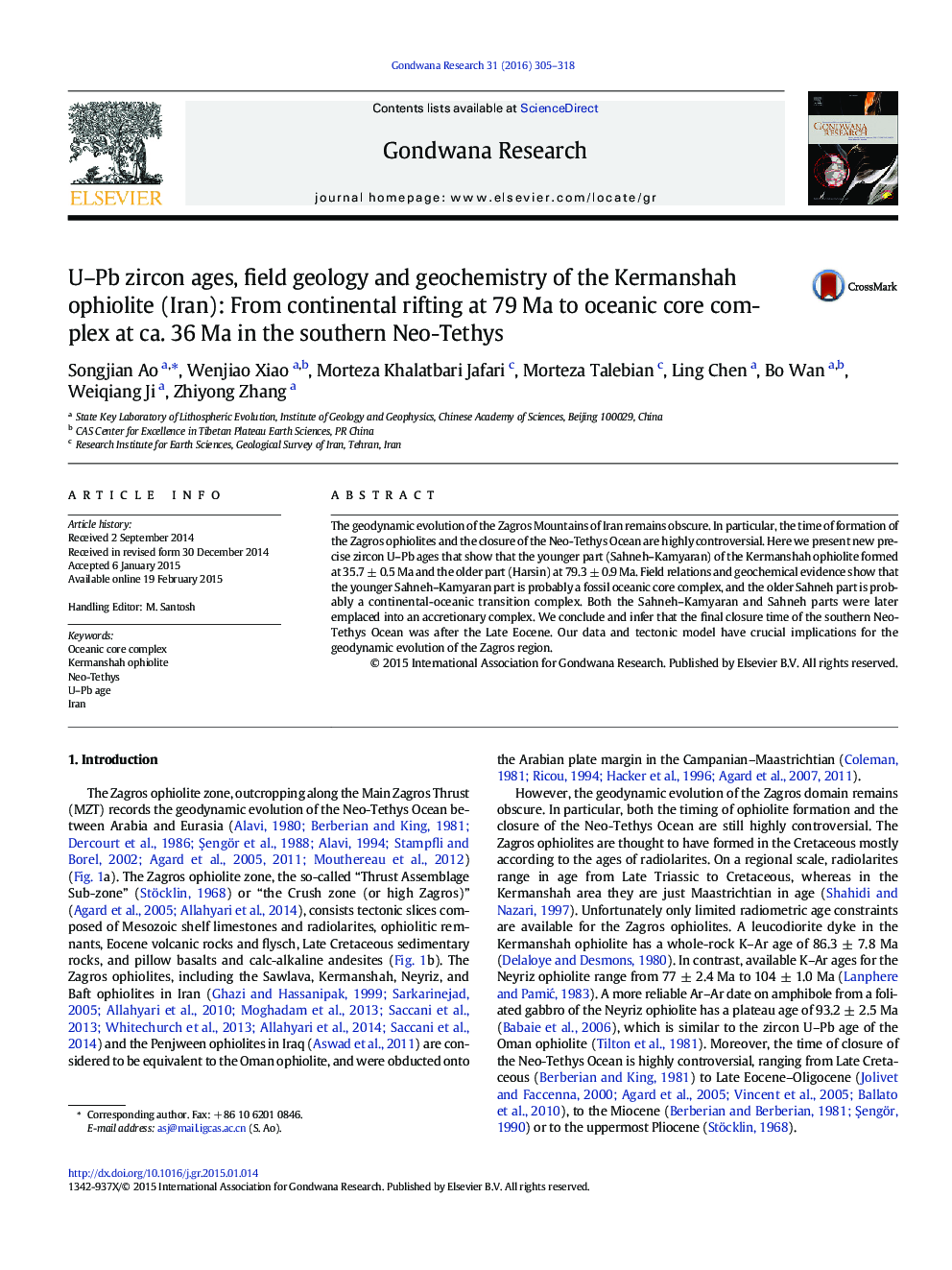| کد مقاله | کد نشریه | سال انتشار | مقاله انگلیسی | نسخه تمام متن |
|---|---|---|---|---|
| 4726686 | 1640140 | 2016 | 14 صفحه PDF | دانلود رایگان |

• The older part of Kermanshah ophiolite was generated by detachment faulting at 79 Ma.
• The younger part of ophiolite originated was from the oceanic core complex at 36 Ma.
• The Zagros ophiolite belt is part of an accretionary prism.
• Neo-Tethys Ocean may have closed after 36 Ma.
The geodynamic evolution of the Zagros Mountains of Iran remains obscure. In particular, the time of formation of the Zagros ophiolites and the closure of the Neo-Tethys Ocean are highly controversial. Here we present new precise zircon U–Pb ages that show that the younger part (Sahneh–Kamyaran) of the Kermanshah ophiolite formed at 35.7 ± 0.5 Ma and the older part (Harsin) at 79.3 ± 0.9 Ma. Field relations and geochemical evidence show that the younger Sahneh–Kamyaran part is probably a fossil oceanic core complex, and the older Sahneh part is probably a continental-oceanic transition complex. Both the Sahneh–Kamyaran and Sahneh parts were later emplaced into an accretionary complex. We conclude and infer that the final closure time of the southern Neo-Tethys Ocean was after the Late Eocene. Our data and tectonic model have crucial implications for the geodynamic evolution of the Zagros region.
Figure optionsDownload as PowerPoint slide
Journal: Gondwana Research - Volume 31, March 2016, Pages 305–318